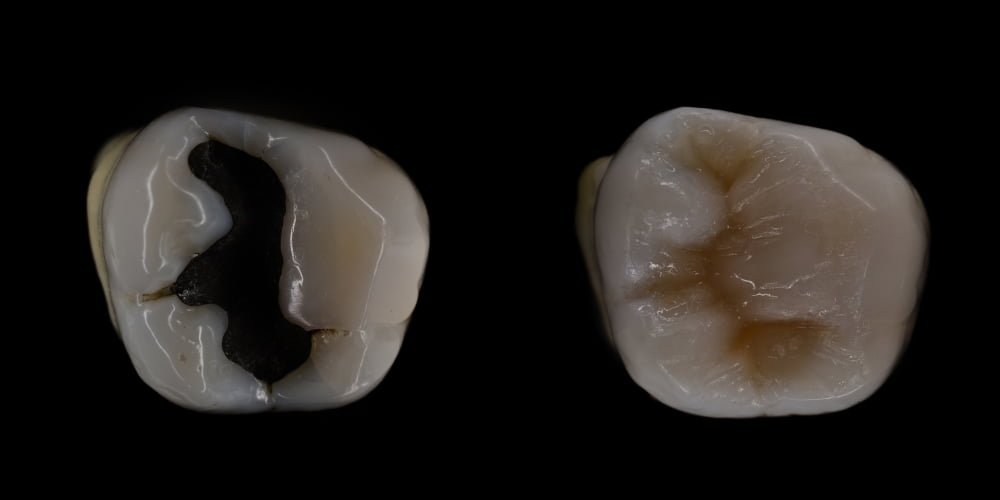Fillings are used to repair a cavity in your tooth. The most common tooth fillings used are:
- composite fillings (tooth coloured)
- amalgam (silver coloured)
- glass ionomer (tooth coloured)
Composite Fillings
These are white coloured fillings essentially made of resin. After the tooth is prepared, the filling is bonded onto the area and a light shone onto it to set it. The dentist will choose a shade to match your own teeth, although over time they may become stained.
Amalgam Fillings
Amalgam fillings are silver in colour. They are made by combining mercury and a silver alloy (50% mercury, 35% silver, and 15% tin, copper and other metals). Amalgam is long lasting and hard wearing and has been used in fillings for at least 150 years.
Are there any risks from amalgam fillings?
The mercury in dental amalgam is not poisonous once it is combined with the other materials in the filling. Its chemical nature changes so that it is harmless.
Research into the safety of dental amalgam has been carried out for over 100 years. So far, no reputable ‘controlled’ studies have found a connection between amalgam fillings and any medical problem.
Glass Ionomer Fillings
Glass ionomer fillings form a chemical link with the tooth. They may also release fluoride, which helps to prevent further tooth decay. This type of filling is fairly weak. Because of this, they are usually only used on baby teeth and ‘non-biting’ surfaces such as around the ‘necks’ of the teeth. Little preparation is needed as the filling bonds directly to the tooth.

